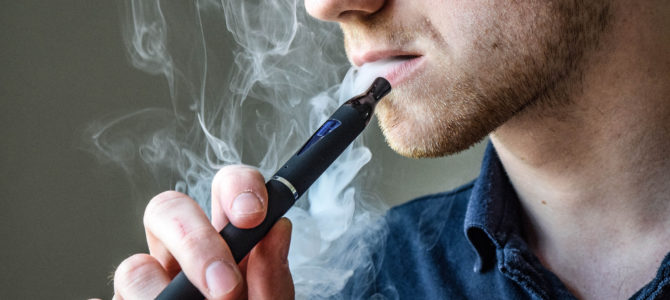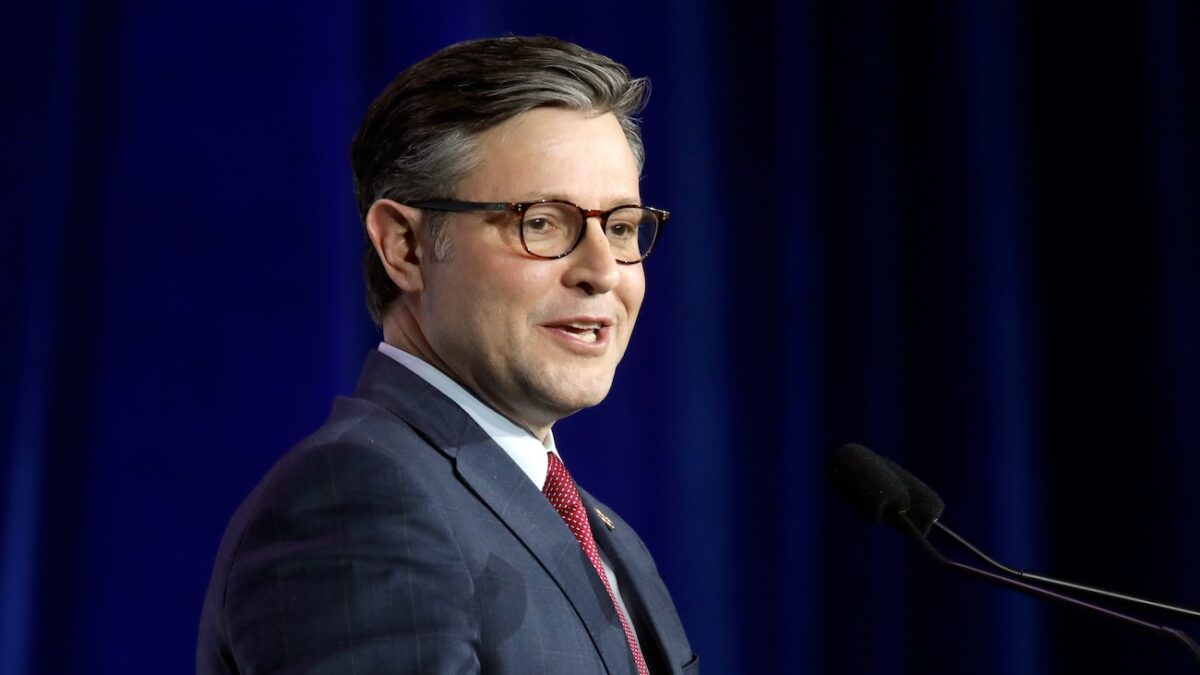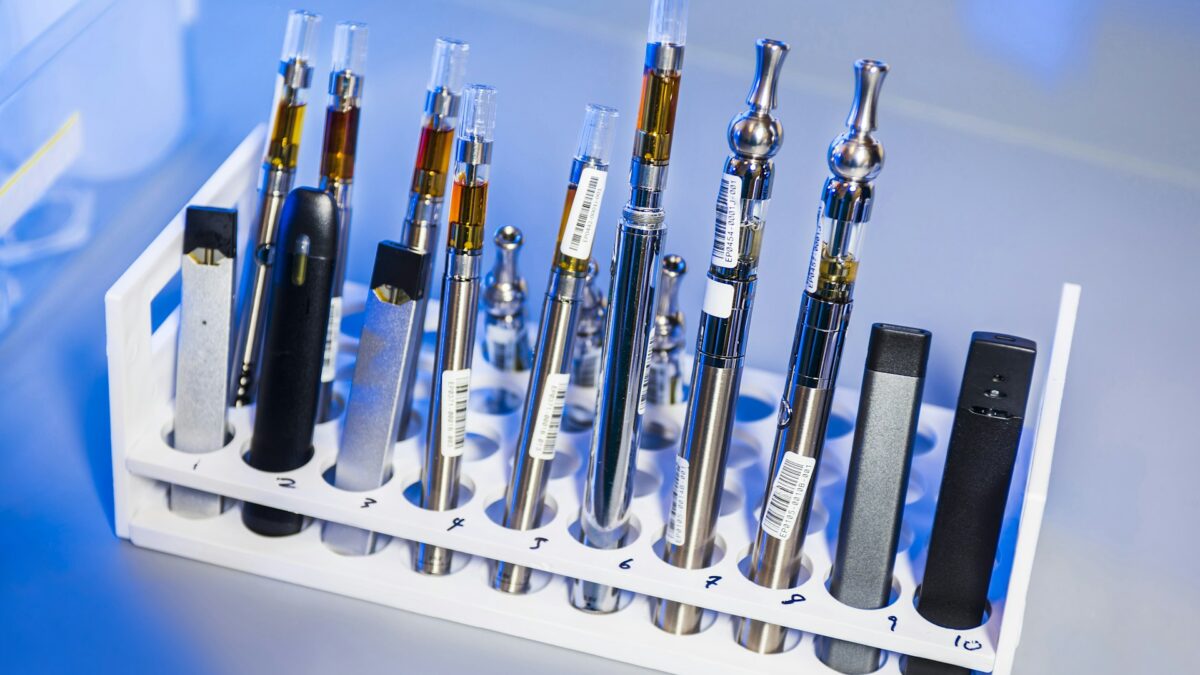The Trump administration has pushed to ban flavored electronic cigarette products in the wake of a vaping scare in mid-October, when a mysterious lung illness affected more than 2,000 people and killed at least 39, including teenagers. The disease caused widespread panic and highlighted the potential dangers of vaping, despite the Centers for Disease Control (CDC) attributing the outbreak to black-market THC products, not FDA-approved vaping products.
“The latest national and state findings suggest products containing THC, particularly those obtained off the street or from other informal sources (e.g. friends, family members, illicit dealers), are linked to most of the cases and play a major role in the outbreak,” the CDC said in a statement.
Yet the public health agency still recommended that the public refrain from using electronic vaping products altogether, as officials have yet to determine the root causes of the illness: “At this time, FDA and CDC have not identified the cause or causes of the lung injuries in these cases, and the only commonality among all cases is that patients report the use of e-cigarette, or vaping products.”
The scare highlighted the growing use of vaping products among teenagers, lending credence to advocates of the Trump administration’s efforts to curb e-cigarettes, particularly targeting flavored products that appeal to adolescents.
Teenage vaping is indeed a problem. The Food and Drug Administration (FDA) officially declared adolescent use of e-cigarettes an “epidemic” last year. According to the CDC, use of e-cigarettes among high school students jumped from 1.5 percent (220,000 students) in 2011 to 20.8 percent (3.05 million students) in 2018.
Is Teen Vaping a New Epidemic?
Since public health officials have declared teenage vaping an epidemic, the Trump administration announced plans to ban flavored products altogether, with exceptions for tobacco and menthol flavors. According to Axios, the administration plans to finalize its ban in the coming week.
Some, however, have called foul on the administration’s characterizing of teenage vaping as an “epidemic” and have labeled the numbers supporting the FDA’s conclusion misleading. Julie Gunlock, the director of the Independent Women’s Forum’s center for progress and innovation, points out the study the CDC used to justify the FDA’s declaration of an epidemic defines “current e-cigarette use” as any teen who has vaped once in a 30-day period, which would include those who simply tried the products but are not regular consumers.
“Vaping once, twice, even five times a month does not make one a habitual e-cigarette user,” Gunlock wrote. “This type of use is more likely reflective of a teen who wants to look cool at a a party or fit in with his or her friends.”
Gunlock goes on to warn that if vaping weren’t an option for these teens, they might take to experimenting with combustible cigarettes instead. Dr. Jonathan Klein, a professor of pediatrics at the University of Illinois-Chicago who specializes in adolescent medicine and smoking cessation, argues that the 30-day definition is a standard measure in modern medicine.
“The question that’s used in the CDC’s surveys is actually a pretty standard and well-validated question when it comes to any of the substance abuse issues,” Klein told The Federalist. “The data is quite sound, and comparing the data from year to year definitely would suggest that we have an epidemic with the rapid increase in rates of use.”
‘They Can’t Make It Through the Six-Hour School Day’
Stephanie McGeorge, an assistant principal at Westerville North High School located in a suburb of Columbus, has seen the problem first hand.
“I don’t think I’ve had a single cigarette this year” be used among students, McGeorge told The Federalist. “But vaping is at least once a week if not more.”
McGeorge said parents are worried about the problem, which she says has only escalated in the last three years. She now finds “tons of students selling cartridges to each other.”
Mary Kloepfer is a public health teacher at the school. She said that while vaping was becoming a major issue last year, it has reached new heights recently. She has even put a new lesson plan into her curriculum solely focused on electronic cigarettes, separate from conventional smoking.
“It’s a huge problem,” Kloepfer told The Federalist, adding that when kids get addicted, “They can’t make it through the six-hour school day” without sneaking a quick puff.
Dr. Michael Siegel of the Boston University School of Public Health is one of the nation’s leading experts on youth and adult tobacco use. Siegel said that it is teenage addiction to vaping that is the problem, and not simply the high numbers of adolescents using the products.
“I think that simply the fact that a certain percentage of youth has used an e-cigarette in the last 30 days doesn’t make it an epidemic,” Siegel said. “What is an epidemic is a large number of kids using e-cigarettes regularly, and in an addictive or habitual pattern of use.”
Doctors Klein and Siegel both agree that adolescent youths are more susceptible to nicotine addiction than adults, which is supported by data from the CDC showing that nine out of ten cigarette smokers inhale their first cigarette by the age of 18, and 98 percent try smoking by the time they are 26. Also, those who start vaping are at high risk of eventually turning to conventional cigarettes. According to a study conducted by the Yale University School of Medicine, teens who vape are seven times likelier to turn to traditional combustible cigarettes.
“Teenagers are more susceptible to nicotine addiction than adults because of the way their brains are developing,” Klein said, adding that he fears excess exposure to the addictive chemical will hurt the developing brains of American youths.
Siegel disagrees with the idea that using e-cigarettes will damage adolescent brain development. He believes the problem lies in how vaping addiction affects teenage behavior, such as interfering with academic studies and sleep. Kloepfer pointed out these are an issue in her school.
“We’re not seeing a generation of brain-damaged kids. But we are seeing a generation of addicted kids and that’s what needs to be stopped,” Siegel said.
Will a Ban Hurt More than Help?
Many fear that the administration crack-down on electronic cigarettes will strip a successful nicotine alternative to cigarettes from smokers trying to quit. Liz Sheld has benefited from using electronic cigarettes to quit smoking traditional cigarettes.
Sheld, who lives in the D.C.-metropolitan area, told The Federalist she has been off combustible cigarettes for more than two years thanks to the help of flavored e-cigarettes. Worried about the government’s involvement in regulating new industries, Sheld learned how to make her own vape juices and now prefers pastry-cookie flavors in her devices as an alternative to cigarettes.
“I make my own juice now because I learned what happens when the government inevitably comes in to regulate an industry,” Sheld said.
Sheld’s fears are turning out to be well-founded, as the Trump administration begins to implement bans on flavored products from manufacturers. Sheld says she already knows people who have returned to smoking regular cigarettes as a result of the hysteria surrounding the products.
Siegel reiterated Sheld’s concerns, pointing out that in Massachusetts where lawmakers have joined Michigan and New York in implementing temporary bans on vaping products, thousands of vapers are already reverting to cigarettes.
“I have no doubt,” Siegel said of the possibility that Americans who have quit smoking return to cigarettes as opposed to other nicotine alternatives if Trump’s ban is successfully implemented. “We’re going to see this on a massive, massive scale and it’s going to have major public health consequences. What a tragedy that would be.”
Vaping the Most Successful Cigarette Stopper
Vape products have been shown to be the most successful nicotine alternatives to help smokers overcome their addiction to cigarettes. According to a study published in the New England Journal of Medicine this year, researchers found e-cigarettes to be the most effective form of quitting cigarettes as opposed to nicotine-replacement therapy.
Dr. Klein still raised the alarm on the harmful impacts of e-cigarettes, arguing that use of the products are still not without health consequences. Klein notes that users of the products are at risk of cardiovascular disease from the nicotine use and adds that users are still being exposed to damaging chemicals by inhaling them, which Klein says warrants caution when advocating for their use, particularly among teenagers.
Supporters of the Trump administration’s efforts to crack down on e-cigarette makers have pointed to e-cigarette manufacturers’ advertising strategies targeting young people. Juul in particular has been chastised as a primary culprit seeking to build its enterprise on a new generation of addicted teens.
Dr. Klein said it was obvious that the marketing tactics launched by e-cigarette companies such as promoting kid-friendly flavors like bubble gum and cotton candy were driving the vaping rates seen today. Klein also pointed to the popularizing the products through publicizing “pro-social images associating the products with a healthy, active lifestyle.”
Dr. Siegel, who has written the book, “Marketing Public Health: Strategies to Promote Social Change,” said he doesn’t see company advertising to be the primary driver of adolescent use.
“I don’t see a lot of evidence for that,” Siegel said. Instead, Siegel pointed to a culture of vaping that has developed among young people, especially propelled by social media that has lead to the spike in nicotine addicted teens. “Vaping has just become a cool thing.”
Despite the company’s claims that it does not target adolescents, it has been well documented that Juul has done so, primarily in the early days of its marketing. One company representative even went to a high school informing students that the products were “totally safe.”
Juul has since pledged to change its marketing strategy under the threat of new federal regulations. In October, the San Francisco company agreed to stop advertising to young people in a settlement with a California nonprofit. As part of the agreement, Juul will limit its advertising to media where at least 85 percent of the consumer audience is aged 21 and over. The company has also promised to stop advertising on social media, and will not allow its employees to visit schools in any capacity related to their work with Juul.









